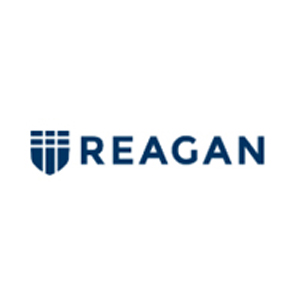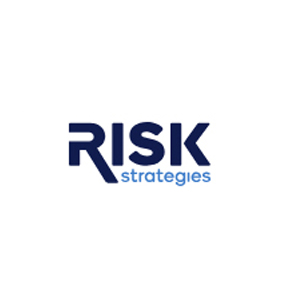\\\\\\\\\\ Top Insurance Consulting firms \\\\\\\\\
-
Angela Adams Consulting
Angela Adams Consulting is a premier resource for independent insurance agencies, offering tailored solutions and expert advice on both front and back office operations. With a team of experienced consultants and specialists, they help agencies overcome challenges and drive growth.
-
EPIC Insurance Brokers & Consultants
EPIC Insurance Brokers & Consultants is a retail risk management and employee benefits insurance brokerage, specializing in property & casualty, employee benefits, and specialty programs. With over 3,000 employees, EPIC offers innovative solutions nationwide to meet clients’ diverse needs.
-
MarshBerry
MarshBerry is a global leader in financial services and consulting, dedicated to helping insurance brokerages and wealth management firms achieve sustained growth. With over 40 years of experience, MarshBerry offers M&A advisory, financial consulting, and market intelligence services worldwide.
-
Reagan Consulting
Reagan Consulting is dedicated to helping insurance brokerages maximize their value and achieve business goals. With over 30 years of experience, they provide strategic consulting, market insights, valuation, perpetuation, and transaction advisory services to navigate complex challenges and ensure long-term success.
More in News
The Transformative Impact of Technology on Third-Party Administration
Friday, October 31, 2025
Fremont, CA: Third-party administrators (TPAs) in healthcare, insurance, and employee benefits are embracing digital transformation to more effectively manage claims, streamline administrative workflows, and maintain regulatory compliance. In today’s increasingly digital landscape, TPAs must adapt to enhance efficiency, improve the customer experience, and stay competitive. By leveraging technology, data analytics, and automation, modern TPAs can provide innovative, cost-effective solutions that boost transparency and elevate service quality. This digital-first approach not only strengthens client support but also reduces operational costs and delivers greater overall value. Digital transformation of the TPAs consists of using sophisticated technologies such as artificial intelligence and machine learning to automate routine claims and administrative services. AI helps enhance claims processing by detecting fraud, making easy decision-making, and simulating historical data to predict trends in service delivery. Machine learning is a function in automation that declines manual input by minimizing human error and processing speeds up for claims. In this way, the system becomes more responsive, leading to lower cost charges and increasing customer satisfaction. The digital TPA model uses cloud-based solutions for flexibility, scalability, and security. This allows TPAs to handle large volumes of data without compromising performance or security. Real-time access to client information from anywhere worldwide fosters collaboration and timely decision-making. Cloud platforms offer superior security features, providing the best privacy and compliance practices specific to the industry. Self-service portals and mobile applications can be a huge advantage for digital TPAs. They allow clients to access all of their information, the status of claims, and the policy details, reducing inquiries and errors in processing claims and improving the experience. Real-time communication and updating ensure that clients are informed at each step, making the experience transparent and user-friendly and enhancing customer engagement and loyalty. TPAs are using data analytics to understand client needs and personalize services. The data enable TPAs to make superior-informed decisions, with better outcomes and early identification of high-risk claims. Predictive analytics can also help TPAs manage claims more effectively, offering tailored services like individual wellness programs or cost-saving strategies for businesses. This enables TPAs to provide more personalized services. Equally, digital transformation in TPAs can address regulatory compliance challenges at a time when the legal environment is becoming very complex. Digital platforms can be developed to receive updates automatically on amendments to regulations. Therefore, the TPAs will always remain compliant with the new rules. Further, automation ensures that all documentation is completed and submitted on time to help reduce risks of non-compliance and fines. This level of precision and accountability can benefit clients from businesses whose industries are subject to rigorous regulations, such as healthcare and workers' compensation. From traditional administrative roles, TPAs are bridging into being strategic and value-driven client partners. They can utilize their technological capacities to bring advanced insight, process simplification, and improved client outcomes. Through automation of routine processes, real-time availability of information, and prediction of trends through data analytics, TPAs can deliver cost-effective and client-centered solutions.
Independent Insurance Agencies Gaining Ground in the Industry
Friday, October 31, 2025
Independent insurance agencies are a vital pillar of the global insurance industry, serving as key distributors of insurance products. Unlike captive agents who represent a single insurer, these agencies act as intermediaries, offering a broad range of policies from multiple carriers. This model creates a competitive, client-focused environment that prioritizes choice and personalization. To meet the shifting demands of consumers and the market, independent agencies are continually evolving—adopting new technologies, responding to changing consumer behaviors, and reinforcing their commitment to tailored service. As the industry undergoes rapid transformation, these agencies remain at the forefront, combining flexibility with innovation to deliver value and drive growth. The Growing Market for Independent Insurance Agencies The independent insurance agency market, a significant player in the overall insurance brokerage landscape, is a testament to resilience and adaptability. In the previous years, the global insurance brokerage market was valued at approximately USD 287.40 billion, with projections indicating robust growth to USD 524.80 billion by 2030, at a Compound Annual Growth Rate (CAGR) of 9.2 percent. This growth is primarily fueled by the increasing global demand for diverse insurance products as economies expand and individuals and businesses seek comprehensive protection for their assets, income, and well-being. Within this broader market, independent agencies continue to demonstrate their resilience and importance, notably capturing a substantial share of the property and casualty market, including a dominant position in commercial lines and a growing presence in personal lines. Client-Centric Business Model The core business model of independent insurance agencies revolves around providing clients with choice, expert advice, and personalized solutions. Unlike single-carrier agents, independent agencies can shop around to secure the most suitable coverage at competitive prices across a wide array of insurers. This flexibility is a significant advantage for consumers, ensuring that their specific needs and risk profiles are accurately matched with appropriate policies. Beyond simply facilitating transactions, independent agents play a crucial role as trusted advisors, guiding clients through complex insurance information, identifying potential coverage gaps, and assisting throughout the policy lifecycle, including claims support. This relationship-driven approach fosters loyalty and positions independent agencies as long-term partners for their clients' insurance needs. Technological Advancements and Industry Evolution A key driver of evolution within the independent agency space is the rapid adoption of technology. The 'InsurTech' movement, which encompasses the integration of advanced technologies into insurance operations, is transforming how insurance agencies function. Artificial intelligence (AI) and machine learning (ML) are increasingly being leveraged for more efficient underwriting processes, faster claims assessment, and sophisticated fraud detection. AI-driven platforms enable the analysis of vast datasets, leading to more accurate risk assessments and personalized premium offerings. Chatbots, powered by conversational AI, are becoming mainstream, handling routine inquiries, providing policy information, and even assisting with appointment scheduling, thereby freeing up human agents to focus on more complex client interactions and strategic initiatives. Beyond AI, other technological advancements are reshaping the industry. Robotic Process Automation (RPA) is streamlining repetitive administrative tasks, boosting operational efficiency. Predictive analytics is used to anticipate customer needs and identify opportunities for cross-selling or upselling. Blockchain technology is enhancing data security and transparency in transactions and record-keeping, building greater trust. The Internet of Things (IoT) and telematics are enabling usage-based insurance models, particularly in auto insurance, where real-time data from devices informs personalized pricing and risk management. Mobile applications and digital portals are becoming indispensable, offering clients convenient self-service options for policy management, payments, and claims initiation. The digital transformation is enabling independent agencies to expand their online presence and engage with clients through multichannel strategies. This includes leveraging social media, email marketing, and content creation to reach new prospects and nurture existing relationships. Online access to policy information, claims tracking, and direct communication with the agency through chat features or virtual assistants are becoming standard expectations. This digital evolution allows agencies to cater to a new generation of consumers, including Millennials and Gen Z, who prioritize digital-first experiences and personalized, flexible coverage options. Furthermore, the evolving regulatory landscape continues to shape the operations of independent insurance agencies. Regulatory bodies, such as the Insurance Regulatory and Development Authority of India (IRDAI), play a crucial role in overseeing the licensing, operational requirements, and financial stability of insurance intermediaries. These regulations aim to protect policyholder interests, promote transparency, and ensure fair practices within the industry. Agencies must maintain robust technological capabilities to ensure compliance with data protection laws and reporting standards, showcasing a commitment to ethical and secure operations. The independent agency model is also adapting to the increasing complexity of insurance products. As new risks emerge, such as cyber threats, and as societal needs evolve, the demand for specialized and tailored coverage grows. Independent agents are uniquely positioned to navigate this complexity, providing expert guidance on niche products like cyber liability insurance or home-based business coverage. They can bundle policies and integrate financial planning services through partnerships, broadening their appeal and offering comprehensive solutions. The independent insurance agency sector is poised not only for continued growth and innovation but also for sustained success. The ability of these agencies to provide personalized service, offer a wide array of choices from multiple carriers, and adapt rapidly to technological advancements solidifies their enduring relevance. The increasing need for expert advice in an increasingly complex insurance landscape further underscores their value proposition. As the industry continues its digital evolution, independent agencies that strategically embrace technology, cultivate strong client relationships, and remain agile in their offerings will be well-positioned for sustained success in the years to come.
Microinsurance Models: Affordable Coverage for Emerging Markets in APAC
Friday, October 31, 2025
FREMONT, CA: In the Asia-Pacific (APAC) region, where a significant portion of the global population resides, a vast number of people remain unbanked or underbanked, lacking access to essential financial services. This leaves them highly vulnerable to economic shocks caused by health emergencies, natural disasters, or the death of a family breadwinner. Microinsurance has emerged as a crucial tool to address this challenge, offering affordable, tailored, and accessible protection to low-income households and individuals. Key Microinsurance Models in APAC The success of microinsurance in the APAC region is closely tied to the adoption of innovative and efficient distribution models, each offering distinct advantages and challenges. The partner-agent model remains the most prevalent, where insurers collaborate with trusted local intermediaries—such as microfinance institutions (MFIs), cooperatives, or retail chains—to distribute and administer policies. These partners leverage their established community relationships to facilitate sales, premium collection, and even claims processing. The full-service model, by contrast, places the entire value chain—from product design to claims handling—under the insurer's control. While this provides greater oversight, it is resource-intensive and less effective in reaching underserved or remote populations. Community-based or mutual models take a collective approach, with members pooling resources to ensure one another, fostering trust and responsiveness, but facing inherent scalability and risk diversification limitations. Lastly, provider-driven models integrate insurance into the core offerings of service providers such as health clinics, utilities, or telecommunications companies. By bundling policies with existing services, these providers achieve large-scale distribution and customer engagement, making this an increasingly attractive option for expanding access to microinsurance. The Role of Technology and Innovation Technology has become a transformative force for microinsurance in the Asia-Pacific region, with mobile and digital platforms significantly reshaping distribution models. These innovations have made it more cost-effective and efficient to reach millions of underserved populations. For example, mobile-based solutions enable mobile network operators (MNOs) to deliver insurance products through mobile money platforms, allowing for instant premium collection via airtime deduction or digital wallets. This not only simplifies payments and reduces transaction costs but has also introduced a "freemium" model, where customers receive basic coverage at no cost for a limited period as an incentive to transition to paid products. Similarly, usage-based insurance (UBI) has gained traction, particularly in motor insurance, by leveraging tracking devices to monitor driving behavior and adjust premiums based on actual usage. Emerging technologies such as blockchain and artificial intelligence (AI) are also enhancing the sector by increasing transparency, reducing fraud in claims processing, and enabling data-driven personalization and more accurate risk assessments. The increasing digital penetration, escalating incomes, and supportive governmental initiatives aimed at fostering financial inclusion within the APAC region are cultivating an opportune environment for the advancement of microinsurance. Insurers, through public-private partnerships, financial literacy programs, and technology, can expand access to crucial financial protection, boosting resilience and economic stability for millions.
The Role of Reinsurance in Managing Risks
Friday, October 31, 2025
Reinsurers significantly spread insurance claims across a larger pool of risk bearers, thereby sustaining the broader insurance ecosystem. FREMONT, CA: Reinsurance is a critical component of the insurance ecosystem, enabling insurance companies to share and manage their risks more effectively. By transferring portions of their liability portfolios to reinsurers, insurers can stabilize their financial operations, make room for more business, and maintain solvency. Reinsurance is a vital risk management tool in an increasingly uncertain world marked by climate change, geopolitical risks, and economic instability. Reinsurance is crucial in the insurance industry, offering risk management solutions that enhance financial stability and operational efficiency. There are two primary types of reinsurance agreements, each tailored to different risk management needs. Treaty reinsurance involves a comprehensive agreement in which the reinsurer automatically accepts all risks within a specified category or portfolio of the ceding company. This structured approach provides predictability and stability and is commonly applied in property, casualty, and life insurance. In contrast, facultative reinsurance operates case-by-case, covering individual risks that may require specialized underwriting. This type of reinsurance is particularly suitable for high-value or complex risks, such as coverage for skyscrapers or oil rigs. Beyond risk transfer, reinsurance provides insurers with several strategic advantages. It facilitates risk diversification by spreading liabilities across multiple reinsurers, reducing exposure to large-scale losses. Additionally, it aids in capital management by allowing insurers to allocate capital more efficiently, freeing up resources for business expansion. Reinsurance also safeguards against catastrophic losses, ensuring financial resilience in significant events like hurricanes, pandemics, or earthquakes. Furthermore, reinsurers contribute expertise through risk modeling and best practices, enabling insurers to enhance their underwriting capabilities and risk assessment processes. The reinsurance landscape continues to evolve in response to emerging risks and technological advancements. Climate change has intensified the focus on climate risk adaptation, with reinsurers leveraging advanced modeling techniques to price risks and support sustainability initiatives accurately. Digital transformation is reshaping the industry, with technologies such as blockchain and artificial intelligence driving underwriting and claims processing efficiency. The pandemic has also led to significant shifts, with pandemic coverage now being integrated into reinsurance contracts to mitigate future uncertainties. Meanwhile, the rise of cyber threats has prompted reinsurers to collaborate with cybersecurity firms, developing specialized policies to address risks like ransomware and data breaches. As the industry adapts to these changes, reinsurance remains critical in ensuring the resilience and stability of the global insurance market. Reinsurance is indispensable for modern insurance operations, offering a robust mechanism to manage risks, maintain solvency, and stabilize finances over time. As the insurance industry faces an ever-expanding array of risks—ranging from natural disasters to cyberattacks—the role of reinsurance continues to grow in importance. Advanced technologies, climate adaptation measures, and evolving contractual frameworks will likely define the future of this sector, ensuring its resilience in an uncertain world.
Driving Workforce Innovation Through Recruitment Firms in the Insurance Sector
Friday, October 31, 2025
The Canadian insurance industry is undergoing a profound transformation, driven by technological innovation and evolving customer expectations. Traditional models are giving way to data-driven decision-making, digital-first engagement, and sophisticated risk management. In this new landscape, competitive advantage is defined not by legacy systems or product portfolios, but by the adaptability and expertise of the workforce. As a result, recruitment firms have shifted from being transactional intermediaries to strategic partners, tasked not just with sourcing talent but with shaping it. By collaborating closely with insurers to develop agile, skilled, and future-ready teams, these firms have become vital drivers in redefining talent acquisition, development, and retention across the sector. From Transactional Placement to Strategic Workforce Consulting The traditional recruitment model in the insurance sector was largely reactive. An insurer would identify a need—an underwriter, a claims adjuster, a broker relations manager—and a recruitment firm would source candidates with the requisite experience. Today, this approach is insufficient. The roles themselves are evolving, and the skills required to succeed are being rapidly redefined. Forward-thinking recruitment firms now operate as strategic consultants. Their engagement begins long before a job description is written. They are embedding themselves within insurance organizations to understand long-term business objectives, digital transformation roadmaps, and future growth strategies. This deep-seated partnership allows them to move beyond filling a single role and instead focus on building entire capabilities within the organization. They provide invaluable counsel on organizational structure, team composition, and the integration of new functions, ensuring that talent strategy is perfectly aligned with corporate vision. This proactive stance transforms the recruitment process from a cost centre into a powerful driver of competitive advantage. Mapping the New Skill Constellation A core function of these modern recruitment partners is to act as interpreters and trend-spotters for the skills of tomorrow. They possess a panoramic view of the market, observing talent movements and emerging competency demands across the entire financial services ecosystem. This vantage point enables them to assist Canadian insurers in navigating the transition from a workforce skilled in traditional insurance functions to one that is equipped for the digital age. The focus has expanded dramatically to include a new constellation of skills. Data science and analytics are paramount. Recruitment firms play a crucial role in identifying professionals who can leverage the power of big data, predictive analytics, and artificial intelligence to enhance underwriting accuracy, personalize pricing, detect fraud, and optimize claims processing. The emphasis is on individuals who can translate complex data sets into actionable business intelligence. Furthermore, digital fluency and customer experience (CX) expertise have become non-negotiable. As insurers invest heavily in digital platforms, mobile applications, and omnichannel communication, the demand for talent versed in user interface design, digital marketing, and seamless customer journey mapping has surged. Recruitment specialists are scouting talent not just from within the insurance sector, but also from technology, e-commerce, and fintech, infusing the industry with fresh perspectives and proven digital acumen. Alongside these technical competencies, there is a renewed appreciation for sophisticated soft skills. Adaptability, critical thinking, complex problem-solving, and collaborative intelligence are the currency of the modern workplace. Recruitment partners are increasingly utilizing advanced assessment methodologies to identify candidates who demonstrate not just what they know, but how they think, learn, and interact in a fluid, team-based environment. Cultivating Internal Talent and Building Future Pipelines One of the most significant contributions of recruitment firms is their role in championing internal mobility and upskilling. Recognizing that the most valuable talent may already be within an organization's walls, they work with insurers to identify high-potential employees whose existing skills can be augmented to fill future needs. This involves a sophisticated process of talent mapping. Recruitment partners help HR and leadership teams to identify adjacent skills within their current workforce. For example, a detail-oriented claims professional with strong analytical abilities may be an ideal candidate for retraining in a data analytics or fraud detection role. By creating competency maps and outlining clear learning pathways, these firms empower insurers to build a culture of continuous development. This not only addresses skill requirements more efficiently but also boosts employee engagement and retention by demonstrating a clear commitment to career progression. Moreover, these partnerships are crucial for building sustainable talent pipelines. Rather than scrambling to fill a vacancy when it arises, recruitment firms help insurers cultivate long-term relationships with potential candidates. They build communities of passive talent, keeping them engaged with the insurer’s brand and vision, ensuring a warm pool of qualified professionals is ready when needed. This forward-looking approach to talent acquisition is essential for navigating the highly competitive market for specialized skills. In a rapidly shifting industry, timely and accurate market intelligence is indispensable. Specialized recruitment firms serve as a vital source of this intelligence. Through their daily interactions with a vast network of companies and candidates, they gather real-time data on compensation benchmarks for emerging roles, prevailing organizational structures, and the effectiveness of different talent retention strategies. This information enables Canadian insurers to make informed, data-driven decisions about their own workforce strategies. It helps them design competitive compensation packages to attract top digital talent, structure their technology and data teams for maximum impact, and develop an employee value proposition that resonates with the modern professional. By providing this external, objective perspective, recruitment partners ensure that an insurer’s talent strategy is not developed in a silo but is informed by the realities and best practices of the broader market. The relationship between the Canadian insurance industry and its recruitment partners has entered a new era of strategic collaboration. These firms have evolved far beyond their traditional mandate to become indispensable advisors, talent developers, and agents of change. By helping insurers define future needs, map new skill sets, cultivate internal talent, and leverage market intelligence, they are not just filling jobs—they are co-architecting a more resilient, innovative, and future-ready workforce. This collaborative partnership is essential for navigating today's opportunities and securing a competitive edge in the insurance landscape of tomorrow.
The Rise of Multi-Carrier Annuity Platforms in Modern Financial Planning
Friday, October 31, 2025
Fremont, CA: Retirement planning is driven by greater longevity, market volatility, and a growing consumer need for guaranteed lifetime income. In response, a significant technological shift is underway, driven by the rise of multi-carrier annuity platforms. These innovative digital solutions are transforming how financial advisors and clients interact with annuities, integrating complexity into a simplified, accessible, and highly efficient system, and positioning annuities as a central pillar of modern financial planning. The Imperative for Change The annuity sales process has long presented challenges for financial advisors, often described as “annuity complexity.” This stems from the inherent intricacies of annuity products, which include multiple riders, crediting methods, and surrender schedules. Advisors were required to manually compare offerings across carriers, a time-consuming, error-prone process that limited efficiency and accuracy. The operational process further compounded these challenges—lengthy paper applications, manual suitability reviews, and slow processing times created significant administrative friction, driving up costs and delaying client outcomes. The increasing emphasis on fiduciary responsibility has heightened the need for advisors to demonstrate that their recommendations align with the client’s best interests. Achieving this requires the ability to quickly and comprehensively survey the entire market—an objective that traditional processes could not fulfill. The emergence of digital, multi-carrier platforms addresses these shortcomings by simplifying comparisons, reducing manual input, and ensuring that advisors can meet fiduciary standards with confidence and transparency. The Benefits: A New Era of Annuity Distribution Multi-carrier annuity platforms are transforming the landscape for advisors, clients, and carriers alike. For financial advisors, these platforms automate key processes — such as quoting, application submission, and follow-up —significantly reducing administrative workloads and allowing more time for strategic financial planning. They also support compliance with best-interest regulations by offering a comprehensive, transparent view of the annuity marketplace. At the same time, broader product access enables more precise matching of client needs, risk profiles, and tax considerations. Clients, in turn, benefit from greater transparency, faster processing times, and improved product outcomes driven by increased competition among carriers. Standardized data presentation also enhances client understanding, allowing advisors to explain complex annuity structures more clearly and effectively. For insurance carriers, adopting these platforms expands distribution reach and reduces operational complexity by enabling standardized data exchange, thereby minimizing processing errors and acquisition costs. The continued integration of multi-carrier platforms with broader FinTech ecosystems will drive further innovation. Embedding annuity data within financial planning tools will provide a holistic view of retirement income strategies. At the same time, advances in artificial intelligence and predictive analytics will enable personalized, data-driven product recommendations. As annuities increasingly find their place within employer-sponsored retirement plans, these digital platforms will be indispensable in managing the scale, efficiency, and compliance of in-plan annuity offerings—marking a decisive shift toward a more connected, intelligent, and client-centric future for the annuity industry. Multi-carrier annuity platforms are an essential innovation, simplifying the complexity of guaranteed income products and democratizing access to crucial retirement solutions. They are fundamentally changing the workflow of financial professionals, enabling annuities to be more easily, efficiently, and compliantly integrated into retirement plans, securing the economic future for a new generation of retirees.















